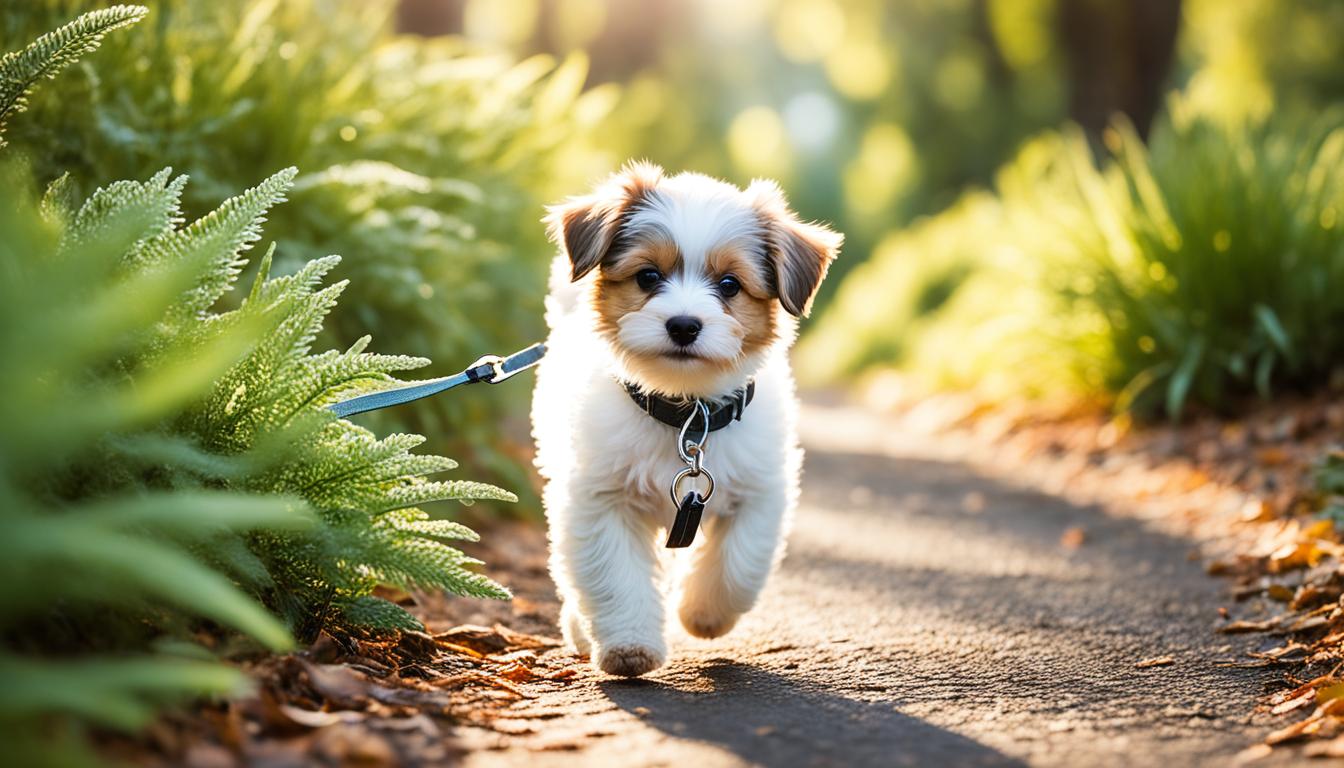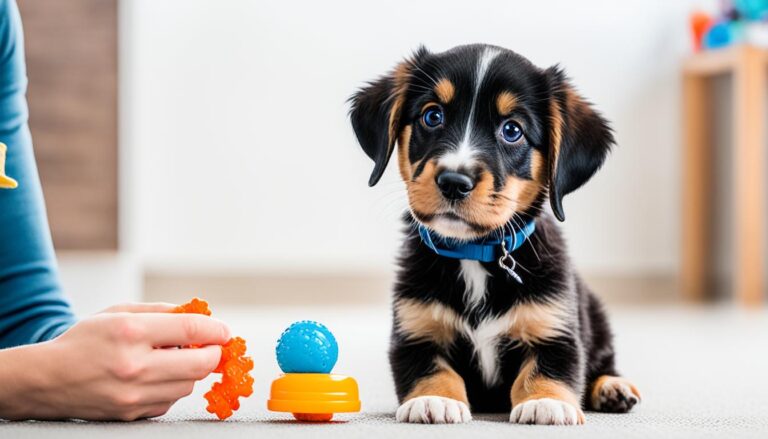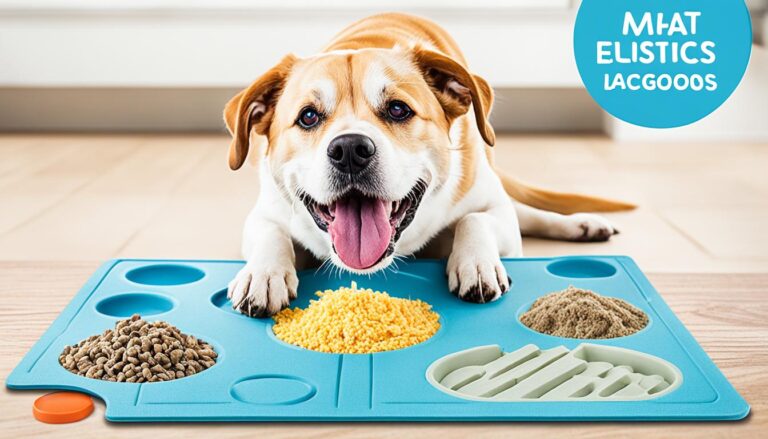Quiet Puppy Walking Guide: Tips & Tricks
Many people think that dogs naturally know how to walk politely on a leash, but this skill actually needs to be trained. As professional dog trainers, we understand the importance of teaching your puppy to walk quietly and calmly. In this guide, we will provide you with valuable tips and tricks to help you achieve quiet puppy walking success.
Key Takeaways
- Introduce your puppy to the collar or harness and leash in a positive and rewarding way
- Teach a cue that signals food is coming, such as a clicker or a positive word
- Practice walking indoors before transitioning to outdoor walks
- Use positive reinforcement to reward your puppy’s good behavior
- Address common leash-training issues, such as pulling, lunging, and barking
Reasons Why Your Puppy Doesn’t Want to Walk and Solutions
Is your puppy showing reluctance when it comes to going for a walk? Don’t worry, it’s not uncommon for puppies to have reservations about outdoor adventures. Understanding the reasons behind their hesitation can help you address the issue and make their walking experience more enjoyable.
1. Fear and Uncertainty
Fear and uncertainty can be major factors contributing to your puppy’s resistance to walking. New environments, unfamiliar sounds, and sudden encounters with loud noises can overwhelm a young pup. They may feel insecure and hesitant to step outside their comfort zone.
To help your puppy overcome fear and uncertainty:
- Gradually introduce your puppy to the outside world by starting with short walks in quiet areas.
- Provide positive reinforcement and rewards to associate walking with positive experiences.
- Expose your puppy to different environments and stimuli in a controlled and gradual manner.
2. Lack of Interest
Some puppies may simply not be interested in walking. This disinterest could be due to their natural temperament or individual preferences. They may find other activities more engaging or enjoy playing in a familiar indoor environment.
To spark your puppy’s interest in walking:
- Make walks more engaging and exciting by incorporating interactive games and toys.
- Vary the routes and environments to stimulate your puppy’s curiosity.
- Walk alongside another dog to provide social interaction and motivation.
3. Pain or Fatigue
Pain or fatigue can also contribute to your puppy’s reluctance to walk. They may have experienced discomfort from a previous walk, have an underlying health issue, or simply be tired from playing or training.
To address pain or fatigue:
- Ensure your puppy has enough rest and recovery time between activities.
- Monitor for signs of discomfort during walks, such as limping or reluctance to move.
- If you suspect pain or fatigue, consult your veterinarian to rule out any medical conditions.
4. Weather Conditions
Weather conditions can play a role in your puppy’s enthusiasm for walking. Extreme heat, cold, rain, or strong winds can make walking uncomfortable or unsafe for your furry friend.
To accommodate weather conditions:
- Adjust the timing of walks to avoid extreme temperatures or inclement weather.
- Invest in appropriate gear, such as a raincoat or booties, to protect your puppy from harsh conditions.
- Offer indoor alternatives, such as treadmill training or interactive play sessions, on days when outdoor walks are not feasible.
A Visual Reminder:
Remember, each puppy is unique, and their preferences and tolerances may vary. By understanding their individual needs, providing positive reinforcement, and creating a safe and enjoyable walking experience, you can help your puppy build confidence, overcome challenges, and develop a love for outdoor adventures.
Tips for Teaching Your Puppy to Walk Nicely on Leash
Teaching your puppy to walk nicely on leash is an important skill for both you and your furry companion. It requires patience, positive reinforcement, and consistency. To start, ensure that your puppy is comfortable wearing walking equipment, such as a collar or harness and leash. This will help them feel secure and ready to explore the world during walks.
Next, use a marker or bridging stimulus, like a clicker or a word, to pinpoint the moment your puppy exhibits the desired behavior. For example, when your puppy walks by your side or responds to a leash cue. This will help reinforce the positive actions and make the learning process more effective.
Begin with backward steps to discourage pulling. By moving in the opposite direction when your puppy pulls, you can teach them that pulling doesn’t lead to moving forward. Gradually increase the distance of your walks, allowing your puppy to explore and enjoy their surroundings while keeping their attention on you.
It’s also important to teach your puppy to come on cue while on leash. This will help you regain control in situations where their curiosity leads them off the desired path. Additionally, reinforce good leash-walking behavior with praise and rewards, such as treats or playtime. This positive reinforcement will motivate your puppy to continue exhibiting the desired behavior.
Remember to prioritize safety during walks. Keep them short and enjoyable, especially in the beginning when your puppy is still learning. Always have the necessary accessories on hand, including a strong leash, a well-fitted collar or harness, poop bags for clean-up, and water and food bowls for longer outings. With time, practice, and consistency, your puppy will become a well-behaved walking companion.
FAQ
How do I teach my puppy to walk on a leash?
Start by introducing your puppy to the collar or harness and leash in a positive and rewarding way. Use positive reinforcement to reward your puppy’s good behavior during outdoor walks and practice inside before moving outside. Dog training expert Kathy Santo suggests using a cue that signals food is coming, such as a clicker or a word like “yes.”
Why doesn’t my puppy want to go for a walk?
There can be several reasons why your puppy doesn’t want to go for a walk, including fear and uncertainty, disinterest, pain or fatigue, or adverse weather conditions. It’s important to gradually familiarize your puppy with the outside world, create a safe and positive environment, and tailor walks to your puppy’s preferences and the weather conditions.
How can I teach my puppy to walk nicely on a leash?
Teaching your puppy to walk nicely on a leash requires patience, positive reinforcement, and consistency. Start by ensuring that your puppy is comfortable wearing walking equipment like a collar or harness and leash. Use a marker or bridging stimulus, like a clicker or a word, to highlight the desired behavior. Begin with backward steps to discourage pulling and gradually increase the distance of your walks. Teach your puppy to come on cue while on leash and reinforce good leash-walking behavior.
What accessories do I need for puppy walking?
When taking your puppy for a walk, it’s important to have the necessary accessories. These include a leash, collar or harness, poop bags, and water and food bowls to ensure your puppy stays hydrated and fed during the walk. Prioritize safety, keep walks short and enjoyable, and always prioritize the well-being of your puppy.







